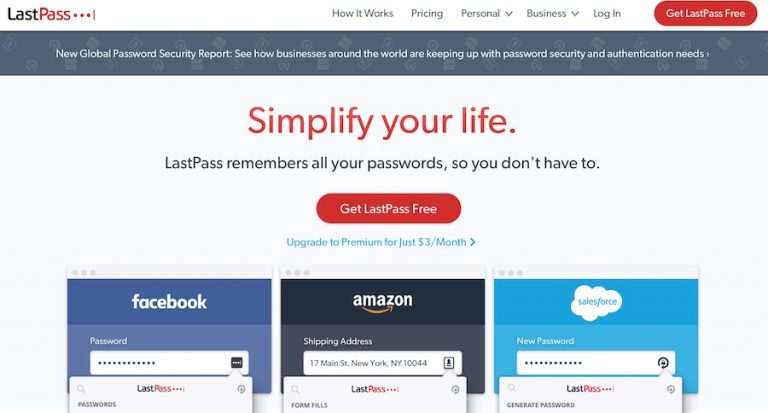

Employees who make mistakes should not be reprimanded or shamed instead, their mistakes should be seen as a learning opportunity to create a culture in which no question is too basic or simple.

Also, be sure to approach training in a constructive manner. For some, simulating social engineering attacks that mimic real-life phishing attempts can help employees realize risks. People learn differently, so don’t be afraid to get creative when delivering your cyber security training. Make cybersecurity easy and engagingīeing transparent, clear, and consistent in messaging is essential for the development of a positive cybersecurity culture. “Neither LastPass nor any internal admins can access an individual’s vault and I think that’s really important, a zero-trust environment is crucial and allows our team to confidently adopt the product,” says Ham. This empowered his staff to maximize their usage knowing that they all had the same responsibilities and tools, irrespective of job title or administrator access. While building a zero-trust environment with LastPass, Ham assured employees that access to their vaults remained solely with them. Operate on the assumption that practices take time to spread throughout the company and that culture evolves with that same time and effort. Be sure to engage your C-level executives with the mandatory security training and make it known that security policies and processes will be enforced across the board, irrespective of seniority. If the CEO, CFO, and CISO are adhering to cybersecurity practices, they can lead by example and set the standard for the rest of the team.
#Lastpass security password
To really enable buy-in from your team, good cybersecurity practice and password hygiene should be executed by the C-suite and cascaded down through the organization. Ham comments: “As soon as we recognized the risks that poor password hygiene presented to our business, I knew immediately that a password manager with a zero-trust environment was the solution to our problems.” Establish a top-down approach It helps to automate oversight of business password management by automatically testing and recognizing a user’s identity. With LastPass, implementing and onboarding your password management tool is an easy and simple process with a user directory. As we enter a permanent phase of hybrid working, this encompasses users both inside and outside the company’s network. A framework for corporate cybersecurity known as a zero-trust strategy requires all users to be continuously validated, authorized, and authenticated before they can access systems or company data. Multi-factor authentication (MFA) and zero-trust are two security strategies to increase access controls, and many businesses are now looking to adopt a zero-trust mindset. Let’s look at three ways Ham built a strong cybersecurity culture at Handshakes, and how LastPass helped along the way. He recognized the role of a dynamic password manager in building a robust cybersecure culture and promptly invested in the password management solution. Kenneth Ham, Chief Information and Security Officer at Handshakes, was collaborating with a client when he discovered the benefits of LastPass. As a tech-based company, developing a cybersecurity culture is vital to their success. They are located in six cities in Singapore, Australia, and Taiwan. Handshakes is an award-winning DataTech company founded in 2011 that enables businesses to make informed decisions through delivering meaningful insights from reliable data. Teams can openly share problems without fear of retaliation, and remain equipped with knowledge that deters them from using shadow IT services.Employee happiness and retention can also increase through building an inclusive and educational space in which security rules exist and are openly discussed.Employees are likely to recognize gaps and aid in resolving them, helping organizations to minimize risks.A positive cybersecurity culture can foster constructive habits, such as: Security resilience is the ability to protect the integrity of every facet of your business so it can withstand unpredictable threats and emerge stronger. Implementing a strong security culture can increase an organization’s resilience by as much as 46%, as noted in Cisco’s Security Outcomes Report. It is your employees’ day-to-day work and conscious investment that drives a positive cybersecurity culture and, ultimately, make your organization secure. To build a positive culture, it is key that you focus on people and not just processes or policies. It is your employees’ knowledge, awareness, attitudes, and actions regarding the threat landscape, cybersecurity, and information technologies that shape an organization’s cybersecurity culture.


 0 kommentar(er)
0 kommentar(er)
